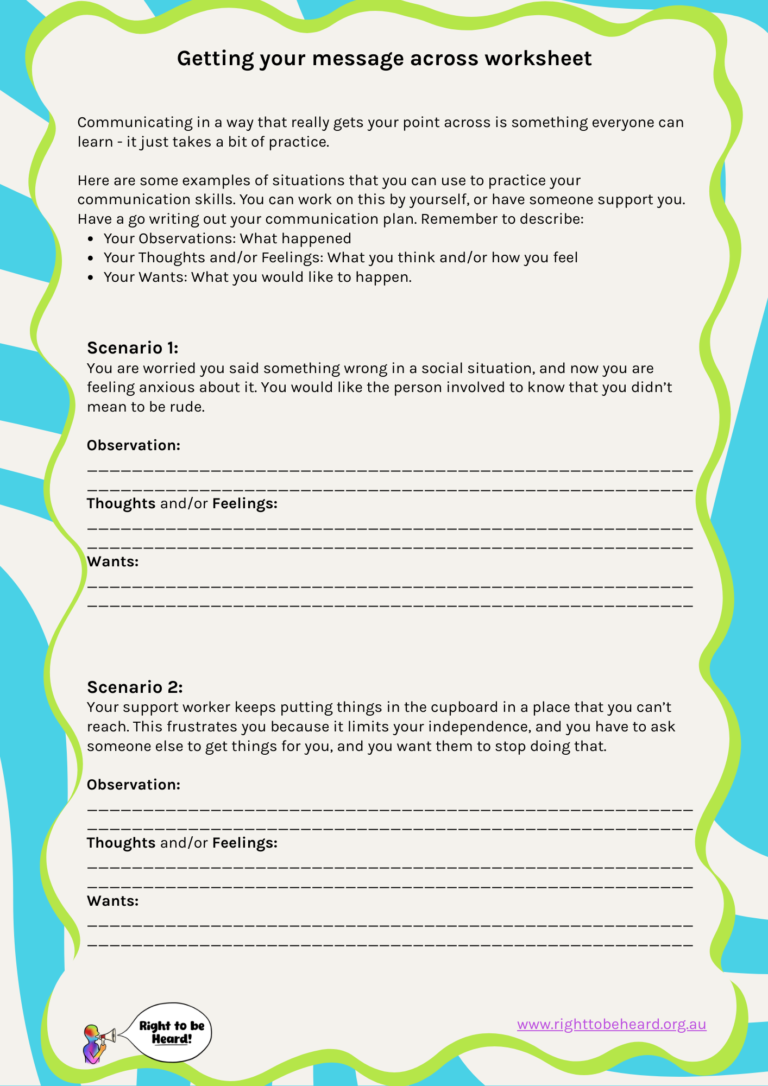How to talk about a problem
If a support worker or service provider has done something that upsets you, talking to them can help fix the problem.
Sometimes people may not be aware that they did something wrong or upset you. Sharing what has happened and how you’re feeling can help them understand:
- There is a problem
- How it affects you
- How it can be fixed
This page has tips to help you talk about a problem, so you can feel confident speaking up about what’s happening.
Important!
You do not have to raise concerns directly with the person or service provider causing the problem if you do not feel comfortable. Visit the Make a complaint section of our website for other ways to speak up and get help.
Make a complaintWays to communicate
Here are some different ways that people communicate:
- Reading, writing or typing
- Talking
- Auslan
- Key Word Sign
- Devices or aids
- Pictures
Some young people may prefer to text while others need to speak in person or with an Auslan interpreter present. Choose ways that works best for you.

Communication cards
Elina, a disabled young person, has created a set of communication cards.
These can help you explain what you need during a conversation when you may not be able to say so verbally.
How to talk about a problem
When you talk to someone about a problem, being clear and specific helps them understand your concern.
You can share:
- Describe what your saw or experienced.
- Stick to the facts.
- Example: “I noticed that my support session ended 20 minutes early.”
- Share your understanding of the situation.
- Explain why you think there’s a problem.
- Example: “I believe my full session is important for my progress.”
- Use “I” statements like “I feel…”
- It’s okay if expressing your feelings is hard. Here’s a resource that can help: Expressing your feelings — Kids Helpline
- Example: “I feel frustrated when my sessions are shorter than planned.”
- Explain what you want to be different in the future.
- Try saying “I’d like you to…” or “I think it would help if…”
- Example: “I’d like to make sure my sessions last the full time.”
Having a plan for what you want to say can help you stay focused and make sure you say everything you need to.

Get your message across
Check out our scenario worksheet, which has examples and space for you to practice these steps.
Tips for communicating
Ask for clarification
- You can’t always know what someone else is thinking or feeling—and that’s okay!
- You can ask them to explain what they mean if you’re not sure.
Share your feelings about speaking up
- If you feel uncomfortable raising an issue, it’s okay to say so.
- Letting the other person know can make them less defensive and more open to listening.
Remember tone and body language
- People often make assumptions based on tone, body language, or voice volume.
- They might think you’re angry or upset when you’re not, especially if your disability affects communication.
- It helps to explain how you’re feeling so others don’t misunderstand you.
Download the social script to practice talking to your support worker about a problem and what you want to change.
Download the social script (text only version)
Social script for raising a concern (PDF)Next steps
If you’ve talked to someone about your concern, you may need to give them time to make changes. Some problems take time to fix.
If your problem is about safety, it should be fixed right away.
If you’ve given them time to fix it, and the problem is still happening, or maybe it was fixed for a bit, but it has started happening again, speak up again.
If nothing changes you can ask others for help or make a formal complaint.
Make a complaint